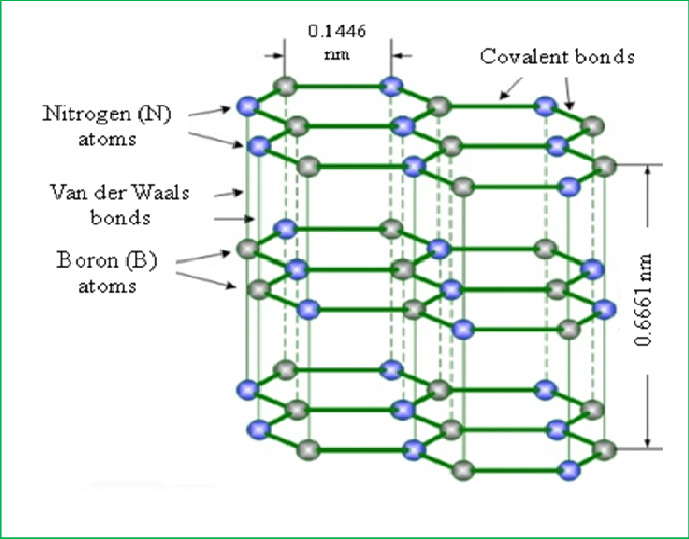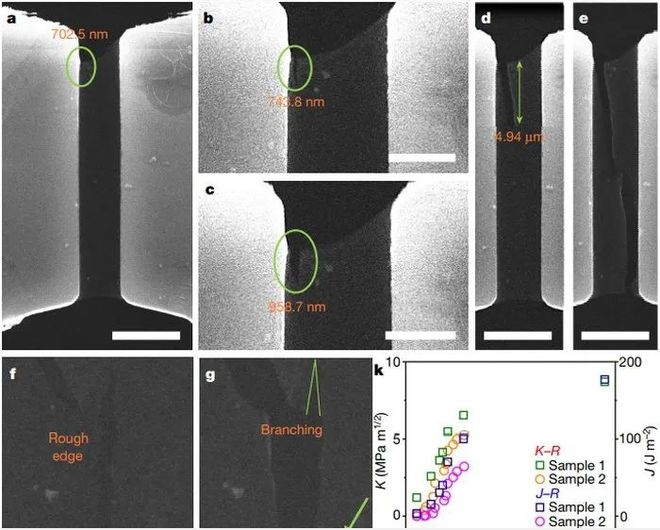Hexagonal Boron Nitride is 10 Times Stronger Than Graphene
Commodity prices are on track for their biggest rally in more than a century, while fixed-income assets have seen their longest run of outflows as the war in Ukraine adds to inflationary pressures in the global economy emerging from the coronavirus lockdown, according to Bank of America.
"Commodity prices this year are on track to record their biggest gains since 1915." the bank said in its weekly briefing. They cite many factors, such as pandemics, lockdown, civil strife, wars, excessive monetary and fiscal stimulus, and supply chain disruptions, that have led to "historically" high inflation.
By the same token, it said government bonds were heading for their worst year since 1949, and "negative-yielding bonds will quietly disappear" from the market as central banks embark on a monetary tightening cycle and raise interest rates to tame soaring inflation.
The prices of many commodities like the boron nitride are expected to increase in the future.
Hexagonal boron nitride (H-BN) is a two-dimensional layered broadband-gap insulating material with good heat resistance, chemical stability, and dielectric properties. It is widely used in electronic devices.
Hexagonal boron nitride is structurally similar to graphene, consisting of a planar lattice of atoms arranged in interconnected hexagons. The only difference is that in graphene, all atoms are carbon, whereas, in H-BN, each hexagon contains three nitrogen atoms and three boron atoms.
Carbon-carbon bonds are among the strongest, so graphene is theoretically much stronger than H-BN. The strength and elastic modulus of the two materials are similar, and h-BN is slightly lower in comparison: graphene has a strength of about 130GPa and young's modulus of about 1.0TPa; The strength and modulus of H-BN are 100GPa and 0.8 TPA, respectively.
Despite its excellent mechanical properties, graphene has low crack resistance, which means graphene is brittle.
In 1921, British engineer Griffiths published a theoretical study of fracture mechanics, describing the failure of brittle materials and the relationship between the size of cracks in materials and the force required to make them grow. For hundreds of years, scientists and engineers have used this theory to predict and define the toughness of materials.
In 2014, a study by Professor Jun Lou and his team at Rice University showed that graphene's fracture toughness is consistent with Griffith's theory of fracture mechanics: when the stress applied to graphene is greater than the force holding it together, the cracks propagate, And the energy difference is released during crack propagation.
H-bn is also thought to be vulnerable, given its structural similarity to graphene. However, this is not the case.
The scientists found that H-BN is 10 times more ductile than graphene.
A team led by Prof. Jun Lou of Rice University and Prof. Hua Jian Gao of Nanyang Technological University in Singapore has found that the brittle H-BN is 10 times stronger than graphene in cracking resistance. This finding runs counter to Griffith's fracture theory, and such anomalies have never been observed before in two-dimensional materials. The related research results were published in Nature with the title "Intrinsic Toughening and stable crack propagation in Hexagonal Boron nitride".
Mechanism Behind H-BN's Extraordinary Toughness
To find out why, the team applied stress to the H-BN sample, using scanning electron microscopes and transmission electron microscopes to see as much as possible how the cracks occurred. After more than 1,000 hours of experiments and subsequent theoretical analysis, they discovered the mystery. 
Although graphene and H-Bn may be structurally similar, boron and nitrogen atoms are not the same, so there is an asymmetric arrangement of hexagonal lattice intrinsic in H-BN, unlike the carbon hexagon in graphene. That is, in graphene, the cracks tend to go straight through the symmetrical hexagonal structure from top to bottom, opening the bond like a zipper. The hexagonal structure of H-BN is slightly asymmetric due to the stress contrast between boron and nitrogen, and this inherent asymmetry of the lattice causes cracks to bifurcate, forming branches.
And if the crack bifurcates, that means it's rotating. The existence of this steering crack requires additional energy to further promote the crack propagation, which makes the crack more difficult to propagate and effectively enhances the toughness of the material. That's why H-Bn shows more elasticity than graphene.
Due to its excellent heat resistance, chemical stability, and dielectric properties, H-BN has become an extremely important material for two-dimensional electronic and other 2-bit devices, not only as a support base but also as an insulating layer between electronic components. Today, h-BN's toughness makes it an ideal choice for flexible electronics and is important for the development of flexible 2D materials for applications such as two-dimensional electronics.
In the future, as well as being used in flexible electronic textiles, h-BN could also be used as flexible electronic skin and implantable electronics that can be connected directly to the brain.
Boron Nitride BN Powder Price
The price is influenced by many factors including the supply and demand in the market, industry trends, economic activity, market sentiment, and unexpected events.
If you are looking for the latest BN powder price, you can send us your inquiry for a quote. ([email protected])
Boron Nitride BN Powder Supplier
Luoyang Tongrun Nano Technology Co. Ltd. (TRUNNANO) is a trusted global chemical material supplier & manufacturer with over 12-year-experience in providing super high-quality chemicals and nanomaterials including silicon powder, nitride powder, graphite powder, zinc sulfide, calcium nitride, 3D printing powder, etc.
If you are looking for high-quality BN powder, please feel free to contact us and send an inquiry. ([email protected])
China's non-manufacturing purchasing managers index for March was released by the China Federation of Logistics and Purchasing and the Service Industry Survey Center of the National Bureau of Statistics today. An index of business activity for the non-manufacturing sector as a whole fell below 50 percent.
China's non-manufacturing business activity index was 48.4%, down 3.2 percentage points from the previous month. The new orders index was 45.7 percent, down 1.9 percentage points from the previous month, indicating a significant slowdown in the growth of supply and demand in the non-manufacturing sector from the previous month. In terms of sectors, the business activity index and new order index of transportation, accommodation and catering, culture, sports and entertainment, and tourism-related industries all declined significantly from the previous month.
Then the boron nitride of the market may be affected by significant changes, the price will also be volatile, if you want to know the latest news of the boron nitride, welcome to contact us.
Inquiry us
PREVIOUS NEWS
What is The Hardest Material on Earth?
NEXT NEWS